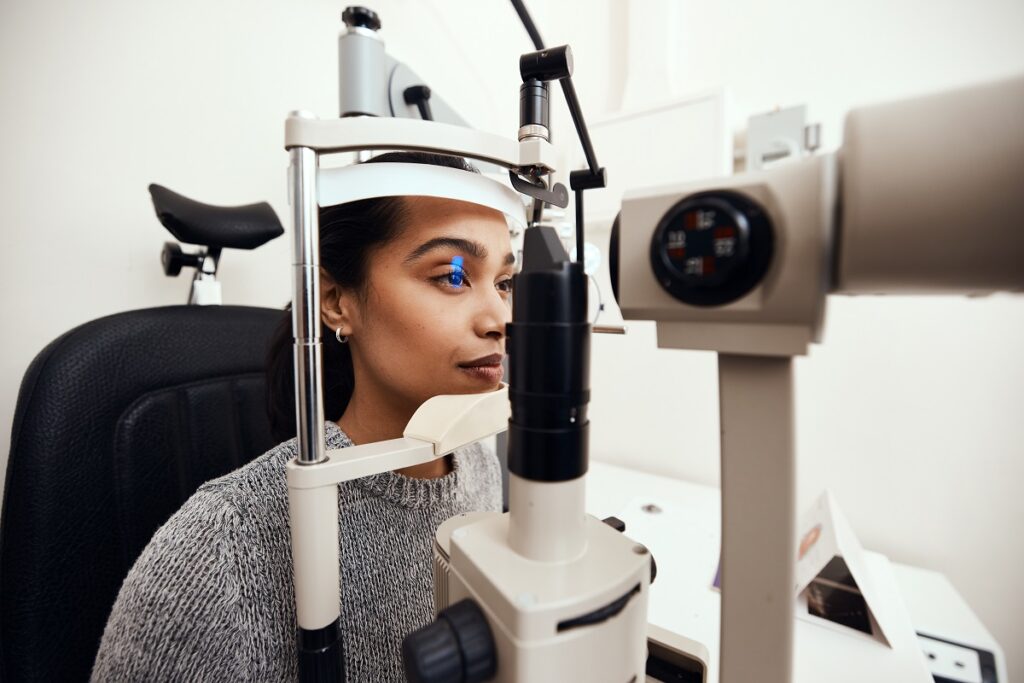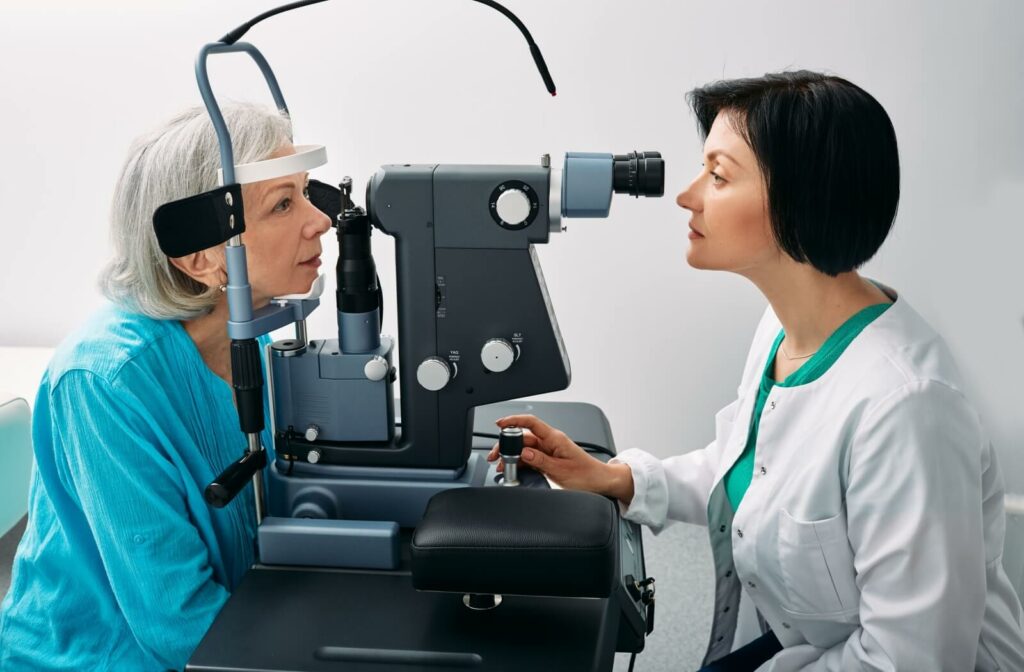Experience Personalized Treatment with Opticore Optometry in Chino
Experience Personalized Treatment with Opticore Optometry in Chino
Blog Article
Checking Out the Newest Technical Advancements in Optometry and What They Mean for Eye Doctors
In the ever-evolving area of optometry, recent technical innovations are improving how specialists approach eye care. From the accuracy of Optical Coherence Tomography to the nuanced insights provided by AI-driven analysis tools, these developments are establishing new criteria in individual assessment and therapy. Teleoptometry is poised to redefine accessibility, making certain that knowledge goes beyond geographical limitations. As these advancements penetrate the practice, eye doctors are confronted with the obstacle of welcoming these tools to boost client outcomes. Yet, the concern continues to be: how will these technical changes redefine the roles and obligations within the profession?
Developments in Diagnostic Devices
Progressing the field of optometry, developments in diagnostic devices have actually reinvented the means eye treatment professionals examine and identify eye conditions and visual disabilities. The past years has observed substantial technical improvements, making it possible for more precise and extensive analyses.
Another trick advancement is the intro of advanced corneal topography systems, which map the surface area curvature of the cornea with precision. These devices are specifically advantageous for fitting get in touch with lenses and identifying corneal conditions. Digital retinal imaging has changed conventional ophthalmoscopy, supplying in-depth, scenic views of the retina that facilitate extensive aesthetic examinations.
The growth of wavefront aberrometry has also been crucial, allowing the analysis of refractive mistakes with unequaled precision (Eye Doctor Optometrist). This modern technology aids in personalizing corrective lenses and enhancing surgical results for refractive surgical procedures. Jointly, these diagnostic improvements encourage optometrists to provide exceptional person care, guaranteeing very early treatment and customized therapy approaches, inevitably improving aesthetic health outcomes
AI in Individual Administration
Structure on the structure of cutting-edge diagnostic devices, the incorporation of expert system (AI) in client management represents a transformative jump for optometry. AI systems are increasingly used to boost performance, accuracy, and customization in person treatment. By evaluating huge quantities of information, AI can recognize patterns and predict potential eye conditions, allowing eye doctors to tailor interventions extra efficiently. This ability is critical in handling chronic eye diseases such as glaucoma and diabetic person retinopathy, where early detection and continual surveillance are crucial.
Additionally, AI-driven platforms assist in streamlined person interactions and management procedures. Automated organizing, online appointments, and personalized follow-up plans not only boost client satisfaction however additionally enhance time management for specialists. These systems can triage people based on the urgency of their problems, making sure that those in vital need obtain punctual interest.
In addition, AI improves decision-making by providing optometrists with evidence-based suggestions and treatment paths. By integrating information from electronic wellness records, AI devices supply understandings that notify professional decisions, decreasing the risk of errors and enhancing individual outcomes. As AI remains to evolve, its function in client monitoring will likely broaden, improving the landscape of optometric care.
Advancements in Retinal Imaging
In the realm of optometry, retinal imaging has actually experienced impressive technical improvements that are improving analysis abilities and individual care. Innovations such as Optical Comprehensibility Tomography (OCT) and fundus photography have actually changed how eye doctors picture and evaluate the retina.
Improved imaging techniques like OCT angiography are more refining analysis precision. This non-invasive method maps blood circulation in the retina, using crucial understandings right into vascular health without the requirement for color injections. Additionally, flexible optics innovation is being incorporated into retinal imaging systems to deal with ocular aberrations, providing unmatched photo clarity. Such innovations help with the recognition of minute retinal changes that might represent illness progression.
In addition, advancements in synthetic knowledge are boosting retinal imaging by enabling automatic analysis of large datasets. These systems aid eye doctors in identifying patterns indicative of pathology, thereby boosting diagnostic accuracy and efficiency. Collectively, these innovations are transforming retinal imaging right into a cornerstone of contemporary eye care, boosting outcomes and expanding healing possibilities.
Teleoptometry's Growing Duty
Teleoptometry is significantly becoming an important component of eye care, driven by advancements in data and diagnostic tools. As optometry accepts digital transformation, teleoptometry assists in remote consultations, allowing optometrists to prolong their services past typical borders. Your Domain Name This is specifically useful in country and underserved areas where access to specialized eye care is typically minimal. By leveraging high-resolution video clip conferencing and progressed retinal imaging, optometrists can carry out comprehensive eye examinations from afar, ensuring prompt diagnosis and therapy.
The integration of expert system (AI) additional enhances teleoptometry, making it possible for the evaluation of visual data and aiding in the detection of eye conditions such as glaucoma and diabetic retinopathy. AI-powered algorithms can swiftly translate complicated imaging information, giving optometrists with valuable understandings that reinforce scientific decision-making.
Furthermore, teleoptometry supports connection of care through smooth integration with electronic wellness records (EHRs), allowing eye doctors to keep detailed individual histories. When consulting with various practitioners., this ensures that patients obtain individualized and constant treatment even.
In spite of these benefits, obstacles Full Article continue to be, including making sure information security and taking care of individual assumptions. However, teleoptometry represents a significant stride in the direction of even more available, efficient, and patient-centered eye treatment. As innovation evolves, its role is poised to expand further.

Future Fads in Eye Treatment
A myriad of cutting-edge fads is readied to improve the future of eye treatment, driven by technical innovations and the evolving demands of patients. One significant fad is the assimilation of man-made knowledge (AI) in diagnostics, which assures to improve the precision and performance of eye examinations. AI algorithms can analyze vast quantities of data from retinal images, potentially spotting conditions like diabetic person retinopathy and glaucoma earlier than typical techniques.
Furthermore, tailored medication is gaining traction in optometry, with hereditary screening informing tailored treatment plans. This technique aims to maximize individual results by tailoring treatments to individual hereditary accounts. Wearable innovation, such as clever call lenses, is also on the perspective, providing real-time monitoring of intraocular stress or glucose degrees, hence offering continual insights into ocular and systemic health and wellness.
The adoption of enhanced fact (AR) and online reality (VR) in training and person education and learning is an view additional emerging pattern. These innovations use immersive experiences that can boost understanding and abilities both for clients and eye doctors. As these trends develop, eye doctors should stay abreast of technological innovations to offer cutting-edge treatment, guaranteeing enhanced client outcomes and satisfaction in the dynamic landscape of eye care.
Conclusion

Jointly, these diagnostic developments empower optometrists to supply remarkable client treatment, ensuring very early treatment and customized treatment methods, inevitably boosting visual wellness results.

As these modern technologies continue to advance, eye doctors must adapt and include them into method, eventually maximizing workflow performance and raising the criterion of eye treatment supplied to patients.
Report this page